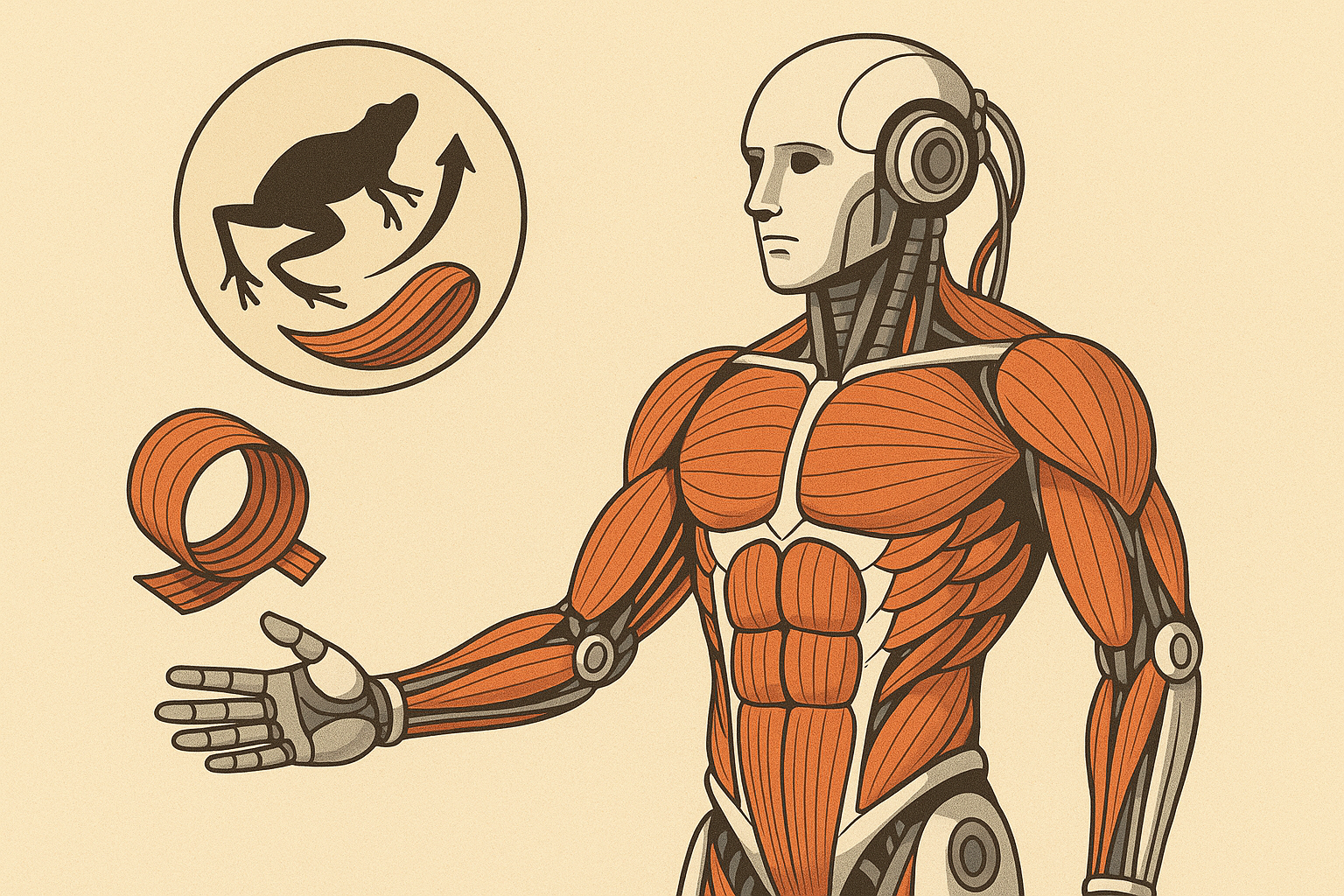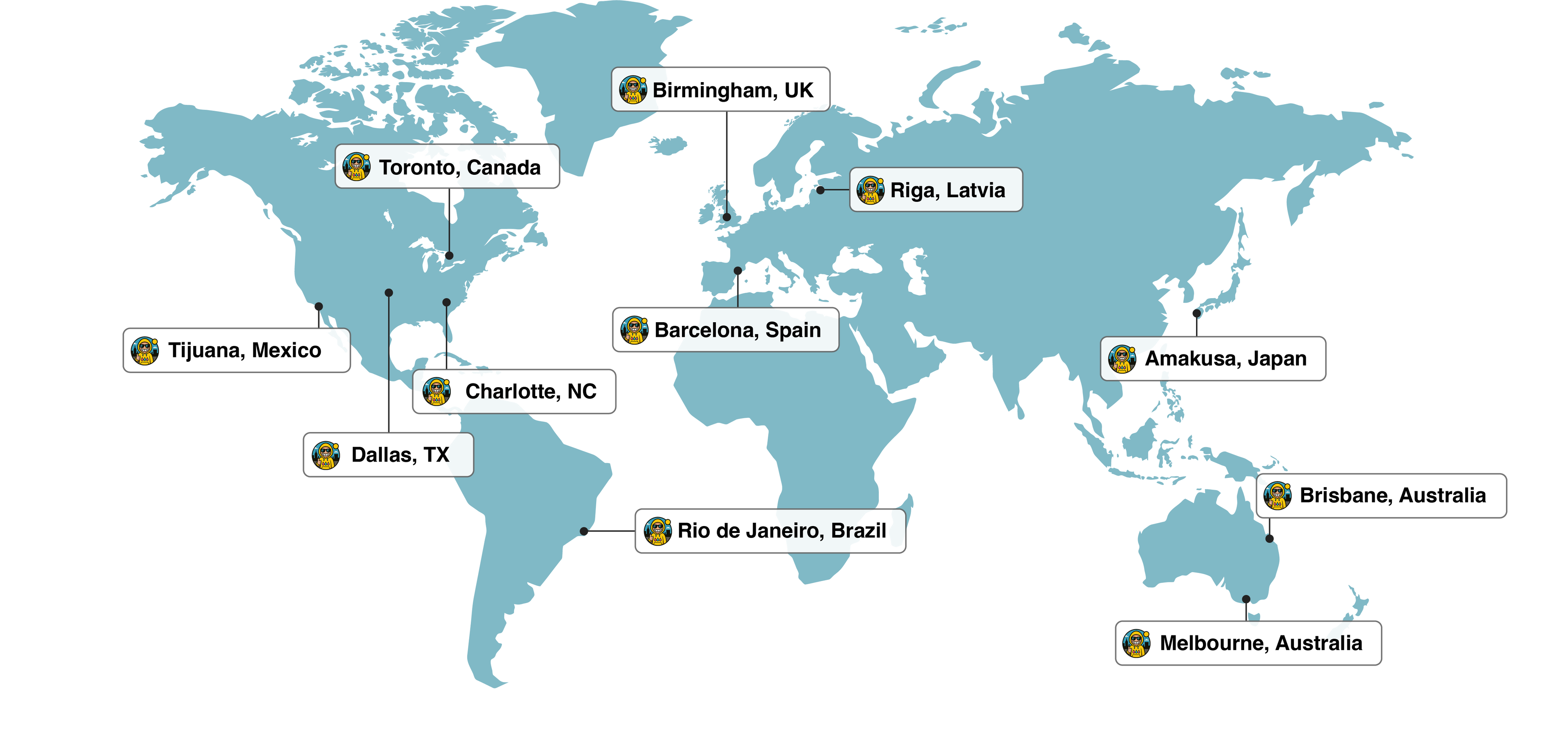Making Robots Move More Like Animals
Robots are becoming more advanced thanks to new materials called "artificial muscles" and "biomimetic actuators." These materials help robots move more smoothly and naturally, almost like living creatures. Scientists use special materials—such as shape-memory alloys (SMAs), electroactive polymers (EAPs), and HASEL actuators—to copy how real muscles and tendons work. For example, just like a frog’s leg can store energy in a tendon to jump far, these robotic systems can also store and release energy to move more efficiently.
Learn more about bio-inspired robotics and how animals influence robot design.
What’s New in Robotic Muscles?
-
Electroactive Polymers (EAPs): These are soft, flexible materials that change shape when electricity is applied. They’re lightweight and don’t need much power, making them great for wearable robots or robots that help in healthcare.
-
Dielectric Elastomer Actuators (DEAs): These materials stretch and move quickly when charged with electricity. They’re useful in soft robots, robot hands, and even flying robots. However, they can wear out easily and still need improvement.
-
Shape-Memory Alloys (SMAs): These metals can "remember" their original shape. When heated, they go back to that shape, creating movement. They are powerful, but they heat up slowly and usually need wires for power.
-
3D-Printed Soft Muscles: Scientists have created new types of robotic muscles using 3D printers. Some of them get stiffer as they move, acting more like real muscles and bones. They’ve been used in robots that can kick or lift objects.
-
Strong Yet Flexible Actuators (ICA, ECA, MISA): These actuators are designed to be powerful but lightweight. Some robotic arms that use them can lift weights or play table tennis.
-
Electrohydraulic Artificial Muscles: These combine two systems—soft actuators and electrostatic clutches—to copy how our muscles work in pairs. This allows joints in robots to move quickly and efficiently.
-
Smart Actuators: New robotic muscles can sense their environment, change how they behave, and even repair themselves if damaged. This makes robots more adaptable and durable.
-
Wireless Actuators: Some new actuators don’t need to be connected by wires and can work using electricity, heat, magnets, or air pressure. These are important for making robots that move freely and work in places where cables are not practical, like inside the human body or in deep-sea environments.
Why This Is Important
-
Using Energy More Wisely: These materials can store and reuse energy, like tendons in animals. That means robots can move while using less power—an important step toward robots that don’t need to be plugged in all the time.
-
Safe for People: Soft and flexible actuators allow robots to safely interact with humans and fragile items. This is useful in hospitals, homes, and rescue missions.
-
Growing Industry: The artificial muscle market is expected to more than double by 2032. As 3D printing and materials improve, these technologies will become more affordable and common in everyday life. See this artificial muscle market report for more details.
Optimizing for Search and AI Tools
This text includes keywords that help people—and AI tools—find it more easily when searching online:
-
Main Ideas: Bio-inspired robotics, biomimetic robotics, soft robotics, artificial muscles, energy-efficient movement.
-
Related Topics: Green robotics, self-powered robots, animal-like movement, swarm robots, low-power AI, solar-powered robots.
Explore examples of soft robotics and their real-world applications.
Conclusion
Artificial muscles and biomimetic actuators are changing how robots move. By copying how real muscles and tendons work, these new technologies help robots become more efficient, flexible, and natural. Thanks to smart materials and wireless designs, we are getting closer to building robots that can move like animals, work safely with people, and run on very little power. This is an exciting time in the world of robotics!


